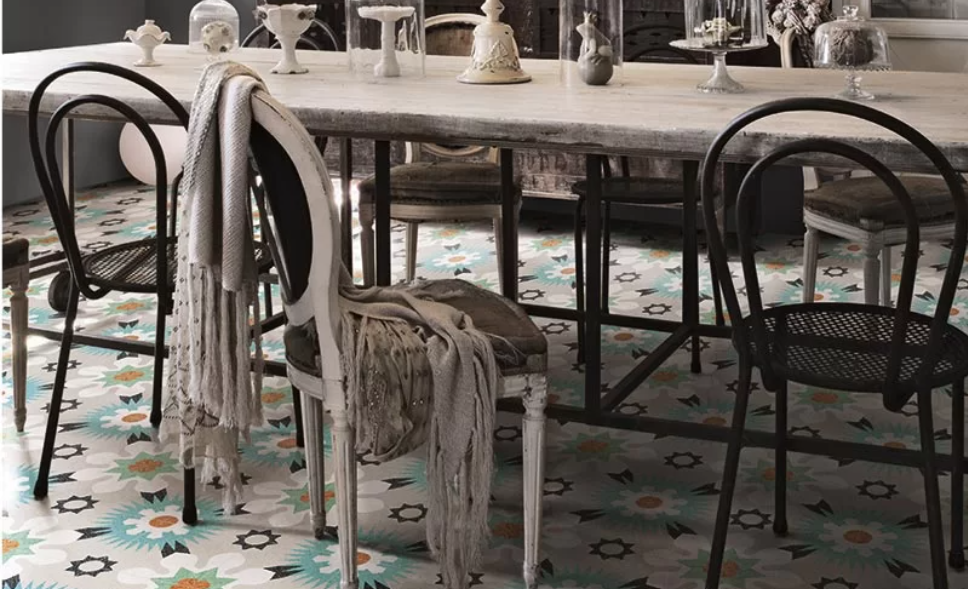
A kitchen backsplash is more than a decorative touch—it’s a shield. It protects your walls from the chaos of cooking: splattered oils, sticky sauces, and steaming pots. Italian tiles elevate this practical surface into a timeless feature, blending rugged durability with refined style.
Italian kitchen tiles are crafted to endure the demands of a busy kitchen—heat, moisture, and constant cleaning—while staying beautiful for years. But not every tile is up to the task. A stunning showroom sample might not perform in daily life. Here’s how to choose one that will.
The Backsplash’s Critical Role
A backsplash is a kitchen’s first line of defense. Cooking throws grease, water, and food at your walls. Without a barrier, stains set in, paint peels, or mold creeps in. Italian tiles create a tough, wipeable surface that handles the mess effortlessly.
But as a focal point at eye level, the backsplash also shapes the kitchen’s atmosphere. A clashing or dated tile can disrupt the space, while the right one creates a seamless, inviting vibe.
Why Italian Tiles Stand Out
Italian tiles are more than a name—they’re a tradition. Italy’s centuries-old tile-making craft combines artistry with precision, delivering tiles that excel in both form and function.
Italian kitchen tiles are known for:
- Porcelain or high-grade ceramic: Porcelain’s density resists water and stains, while ceramic offers durability and ease of installation.
- High-fired strength: These tiles are less likely to crack or chip, even under heavy use.
- Distinctive aesthetics: Subtle glazes and textures give Italian tiles a richness that mass-produced options lack.
Their natural hues—think soft creams, muted blues, or warm beiges—feel organic, blending beautifully with any kitchen’s lighting and mood.
Choosing a Style That Endures
Tile trends fade quickly—bold mosaics one year, glossy finishes the next. A backsplash should feel timeless. Italian tiles lean on classic designs, like handcrafted subway tiles or gently textured surfaces, that stay fresh for decades.
For modern kitchens, Italian tiles offer sleek, minimalist options, crafted with the same premium materials. Whether your space is rustic or contemporary, there’s an Italian tile that fits without chasing fads.
Installation: Where Quality Counts
Even the finest tiles falter with poor installation. Unsealed grout stains quickly. Uneven tiles trap dirt or crack. Cheap adhesives lead to loose tiles over time.
Handmade Italian tiles, with their subtle variations, need a skilled installer to highlight their charm. Details like clean outlet cuts, smooth countertop edges, and precise corner transitions make the difference. Hire a pro with experience to match the tile’s quality.
Thinking Creatively
Most backsplashes stop at the cabinets, but you can go bolder. In open kitchens, extend Italian tiles to the ceiling for a cohesive, low-maintenance look. Extra height behind the stove protects against heavy splatter. Tiling around windows can brighten and open the space.
Subtle color or texture—like a soft sage or weathered terracotta—adds personality without overwhelming. For upkeep, matte or lightly textured tiles hide smudges better than glossy ones, especially under bright kitchen lights.
Mistakes to Avoid
- Don’t mix multiple tile styles or grout colors—it creates clutter.
- Always seal grout, even with sealed tiles.
- Tile the full splash zone. Partial coverage leaves walls vulnerable.
Final Thought
The best backsplash feels like a natural part of your kitchen, handling daily wear while quietly enhancing the space. Italian kitchen tiles deliver that perfect blend of resilience and beauty, built to last through years of cooking and cleaning.
Choose thoughtfully, focusing on what fits your home, not what’s trending. With the right Italian tiles, your backsplash becomes a lasting cornerstone of your kitchen’s charm.




